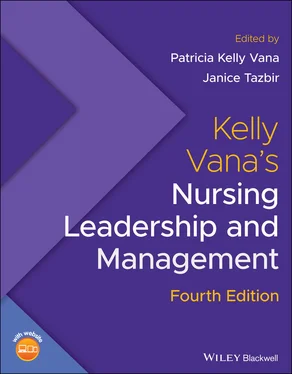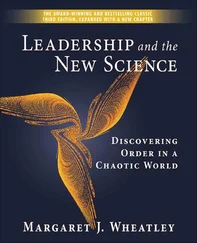In the United States (U.S.), Native Americans had a long history of nursing their ill with natural remedies, rituals, and prayer when the European settlers arrived in the seventeenth century (Keeling, Hehman, & Kirchgessner, 2018). Unfortunately for these settlers, they chose to fight the Native Americans rather than learn from them. As the decades progressed and thousands of settlers had died through famine and/or disease, rudimentary order began to surface. The diary of Maine midwife, Martha Ballard, written from 1785 to 1812, offers a detailed and intimate picture of her work as meticulously presented by historian Laurel Thatcher Ulrich (1991). We learn that Ballard was a highly skilled midwife who delivered 816 babies over the 27‐year period of her diary. She was also a wife, the mother of nine, and an accomplished nurse. Ulrich notes that Ballard “knew how to manufacture salves, syrups, pills, teas, and ointments, how to prepare an oil emulsion, how to poultice wounds, dress burns, treat dysentery, sore throat, frostbite, measles, colic, “Whooping Cough,” [sic] “chin cough,” “St. Vitus dance,” “flying pains,” the salt rhume,” and “the itch,” how to cut an infant's tongue, administer a “clyster” (enema), lance an abscessed breast, apply a “blister” or a “back plaster,” induce vomiting, assuage bleeding, reduce swelling, and relieve a toothache, as well as deliver babies (Ulrich, 1991, p. 11).
We have less information about most other nurses' work, but there are some things to be elicited from surviving records. For example, Susanna Emlen's letters describing her breast amputation because of a tumor in 1814, without anesthesia of course, note that a nurse came with the surgeon, as well as his sister and his daughter. Four other doctors also attended. “About one o'clock,” Emlen wrote, “Nurse Hooke came into the chamber I was in to tell me the Doctors waited my coming in my own room. She covered my head with a handkerchief, as she led me in, hoping it might save me the sight of the preparations—I however saw Dr. Dorsey with his sleeves tucked up and his cloaths [sic] covered with a large apron …. My suffering was severe beyond expression” (Garfinkel, 1990, p. 21). We may extrapolate from this that Nurse Hooke was an experienced nurse. She was brought by the lead doctor to attend Susanna Emlen, and she had the skill to try and protect her patient from the visual impact of the impending surgery.
Sadly, it was wartime, in this period we are thinking of the U.S. Civil War, lasting from 1861 to 1865, which publicized and even romanticized nurses' work. Thousands of women volunteered as nurses during the Civil War. In all, the Union Army's hospital records alone listed approximately 5,600 women as nurses. However, historian Mary Holland notes that no African American women were recorded as nurses. They were listed as “laundress” or “cook.” Of course, these women were actually nurses (Holland, 1998). Most Northern nurses worked in the Army hospitals and their work was primarily concerned with the patient's diet, his physical needs such as laundry, and his emotional and spiritual care. From these nurses came the impetus for the first U.S. Training Schools. Matilda Morris, one Union Army nurse, recalled the scene after the second battle of Bull Run. “A sadder sight one could not imagine than those loads of wounded men. That day my life as a hospital nurse began. Our hearts and hands were full, tending to so many. Some died before they reached the building. Each ward had 50 beds and two nurses…first we gave each a drink of cold water, as that was their only cry. I shall never forget one who was lying near an old building. He looked as if he were dead, but I stopped to make sure, and I thought I saw his lips move. The man who was carrying the pail cried: “Come along! He is dead, fast enough.” “No, wait a minute,” I replied, and began to wet his lips. Very soon I had him revived enough, so much that he could drink out of my cup” (Holland, 1998, p. 187).
Further, as historian Christopher Maggs has pointed out, in times of war, nurses could and did substitute for doctors (Maggs, 1996). For example, Civil War nurses, just years after the discovery of ether and chloroform anesthesia, administered anesthesia on the battlefield before surgery (Lusk, Cockerham, & Keeling, 2019). At that time, administering anesthesia was typically a physician's responsibility.
These Civil War nurses were exemplars of nursing management and leadership. Note that Matilda Morris had the charge of 50 patients, along with one other nurse, and note that she overruled the man accompanying her who wanted her to leave a dying man. Imagine having the care of 50 wounded men in need of food and dressings and sanitation. Thus, modern nursing began in the United States.
The Dawn of Professional Nursing
Florence Nightingale did not invent the training of nurses all by herself—it took a “village” of scientific advances in knowledge, nineteenth century social forces including rapid industrialization, women's desire for greater independence, and the work of many other strong and smart women and men. But let's start with Nightingale because she is an integral part of nursing's heritage.
Florence Nightingale first attracted international attention because of her work for the British army during the Crimean War, 1853 to 1856, when Britain allied with France and Turkey to prevent Russian expansionism. A key factor in this war was that newspaper reporters, for the first time, came out and witnessed the fighting and destruction. Among other war news, the English were horrified to read about the terrible state of their wounded men. They demanded action. Thus Nightingale, accompanied by 38 nurses, went to the large British military hospital at Scutari, a Turkish army barracks near what is now Istanbul. Conditions were ghastly. Most of the men were dying from typhus, typhoid, cholera, and dysentery rather than from their wounds. The place was filthy. “There was no clean linen; the clothes of the soldiers were swarming with bugs, lice, and fleas; the floors, walls, and ceilings were filthy; and rats were hiding under the beds” (Fee & Garofalo, 2010, p. 1591). Nightingale rose to the challenge—through sound management, political understanding, firm leadership, and good use of her society connections back in England. Mortality among the soldiers plummeted and the British public revered Nightingale as the “Lady with the Lamp.” In Nightingale's honor, the public collected the enormous sum of £45,000 (almost two million dollars U.S. today). In 1860, Nightingale used this money to set up a nurses' training school at St. Thomas's Hospital in London. In 1873, three training schools were founded in the United States, in Connecticut, Massachusetts, and New York, using Nightingale's principles. Nurse training schools were based in hospitals where students typically worked full time while hearing lectures in their off duty hours.
Nurse Training Was Inevitable
Nightingale believed in good nutrition, cleanliness, and fresh air. These, she was sure, would put the body in the strongest position to recover. But later nineteenth century scientific advances further necessitated specialized training for nurses. Important early discoveries included anesthesia and, later, antisepsis. Anesthesia for patients undergoing surgery had been known since the 1840s and enabled patients to tolerate complex surgeries. Under anesthesia the muscles were relaxed, the patient wasn't in danger of neurogenic shock from pain, and there was time for delicacy and skill.
Likewise, use of antiseptic techniques during and after surgery hugely increased the likelihood that patients would survive surgery. Hungarian obstetrician Ignaz Semmelweis is rightly honored for discovering that, somehow, washing hands with a chlorinated lime solution before assisting at childbirth drastically reduced the incidence of puerperal fever. But this was in the mid‐nineteenth century and the germ theory of disease had not yet gained widespread scientific support. Even Nightingale was not a believer in microorganisms until her later years. Joseph Lister was the Scottish surgeon who, apprised of Louis Pasteur's assertions that “tiny little organisms floating in the air and settling on organic matter caused its decay” (cited in Goldman, 1987, p. 8), took action. Lister instituted a process he termed “antisepsis”—that is, warding off sepsis before it started—using carbolic acid. In 1869, Lister was appointed Chair of Clinical Surgery at Edinburgh University and his methods, with the resultant drop in patient mortality, gained international acceptance (Goldman, 1987).
Читать дальше












